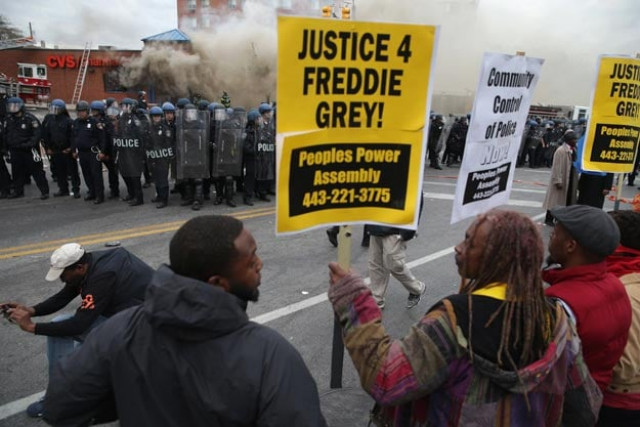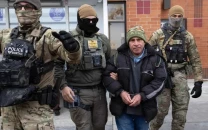Baltimore burning
The fault lines which have divided US since the Civil War are still there

Demonstrators face off with Baltimore Police as a CVS pharmacy burns at the corner of Pennsylvania and North avenues during violent protests following the funeral of Freddie Gray April 27, 2015 in Baltimore, Maryland. PHOTO: AFP
Baltimore follows Ferguson, Missouri, as being yet another city where racial tensions have been sparked by white police actions against black people. There is a steady, indeed, increasing number of incidents involving the police and black people. In one recent instance, a man is filmed being shot in the back by a policeman after he was stopped for a minor traffic violation and made the mistake of running from the scene. Few can now doubt that in large parts of urban America there has been an erosion of the social compact between the state and the people, and the police forces are in the limelight for all the wrong reasons. The civil rights struggles of the 1960s and the efforts of people like Martin Luther King may seem like they happened long ago and far away but the causes they fought for are no less vital — and no less resolved — now than they were then. The mayor of Baltimore — herself black — made a differentiation between those who protested rightfully and peacefully and the “thugs who incite violence”. There are reports that the black gangs of the city have formed an alliance, an alliance unlikely to have peace and public order at the forefront of their minds. As America moves deeper into the 21st century, it is ever clearer that the fault lines which have divided it since the Civil War are still there. Expect no early resolution.
Published in The Express Tribune, April 29th, 2015.
Like Opinion & Editorial on Facebook, follow @ETOpEd on Twitter to receive all updates on all our daily pieces.



















COMMENTS
Comments are moderated and generally will be posted if they are on-topic and not abusive.
For more information, please see our Comments FAQ